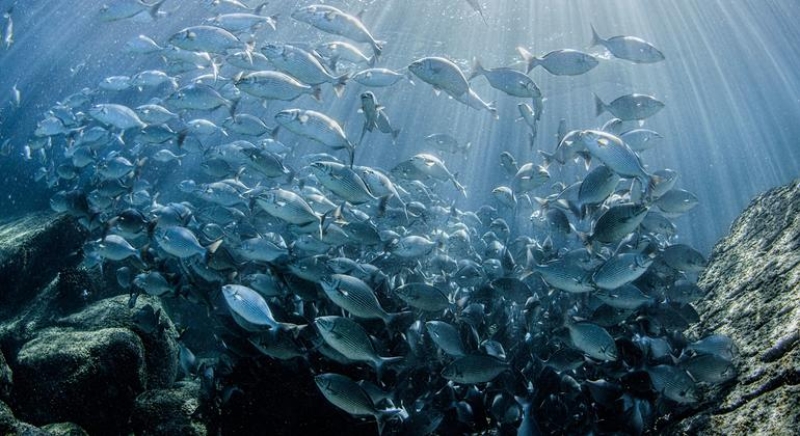- Southeast Asia Floods Kill Over 250, Thousands Displaced |
- Trump Vows to Halt Migration From ‘Third World’ Nations |
- Journos should strengthen themselves to secure rights: Fakhrul |
- Hong Kong’s deadliest fire in a century: How it spread |
- Khaleda ‘moved to Evercare CCU |
Global Momentum Builds for High Seas Biodiversity Treaty

A school of fish swims close to Los Islotes Island in La Paz, Mexico.
Delegates from around the world gathered at the UN Headquarters in New York this week to advance the long-awaited high seas biodiversity treaty, with discussions spanning from rules of procedure to the creation of a clearing-house mechanism and the location of the treaty’s secretariat.
Formally titled the Agreement under the United Nations Convention on the Law of the Sea on the Conservation and Sustainable Use of Marine Biological Diversity of Areas Beyond National Jurisdiction, the treaty was adopted in June 2023 after years of negotiation and remains open for signature until 20 September.
With only eight ratifications remaining before it can enter into force, momentum is accelerating toward the treaty’s implementation phase, which could begin as early as 2026.
Urgent, ‘Decisive, and Concerted Action’
By addressing marine genetic resources, environmental impact assessments, area-based management tools, and the transfer of marine technology, the treaty is crucial for ocean protection.
“The need for decisive and concerted action has never been more urgent,” UN Legal Counsel Elinor Hammarskjöld told delegates at the opening of the session.
From rules of participation and financing to digital access and institutional hosting, negotiators are facing complex trade-offs.
However, the sense of urgency, along with the crowded rooms at UN Headquarters, suggests that the international community is edging closer to turning text into reality.
Recalling the 2025 UN Ocean Conference held in Nice, co-hosted by France and Costa Rica, Ms. Hammarskjöld stated that it reaffirmed the essential role of multilateralism in addressing the pressures on marine ecosystems.
Furthermore, the 39 treaty actions undertaken by states from all regions during the Ocean Conference demonstrated the international community’s strong commitment to conserve and sustainably use the ocean and its resources.
Now, “with the real probability of the first Conference of the Parties to the Agreement convening in 2026, we are at a critical juncture,” she said.
That urgency was echoed by the Commission’s Co-Chair Janine Coye-Felson, who noted, “If the momentum bolstered by the third United Nations Oceans Conference, held in Nice in June this year, sustains, it can be reasonably expected that the Agreement may enter into force in late 2025 or early 2026.”
Indigenous Peoples as Rights-Holders
During the session’s early debates, small island developing States (SIDS) pressed for flexibility, including virtual participation and guaranteed representation in the COP Bureau.
The representative of the Federated States of Micronesia, speaking for the Pacific small island developing States, also supported the allocation of one seat for small island developing States.
Additionally, he called for recognition of “the distinct status of Indigenous Peoples under international law as rights-holders, rather than as mere stakeholders.”
Financing and Equity
Developing States, represented by groups including the G77 and China, the African Group, CARICOM, and Pacific SIDS, emphasized that funding for participation should not be optional but an obligation under the treaty. They also called for a voluntary trust fund to cover the full expenses of delegates from least developed countries, landlocked states, and SIDS, while opposing restrictions on states in arrears.
‘Clearing-House’
As entry into force approaches, delegates focused on operational issues. A proposed Clearing-House Mechanism will serve as the treaty’s central hub for information exchange.
“There is perhaps no more urgent piece of work in front of us than this one,” underscored Commission Co-Chair Adam McCarthy at one of the meetings.
Given the current rate of ratification, “we may need a form of Clearing-House Mechanism in operation by early 2026,” he noted, urging delegates to work toward having the informal expert group “up and running” to begin its work by September.
With 139 signatures and 52 ratifications already secured, the treaty is within reach of the 60 required for entry into force.
The gathering will continue at UN Headquarters until 29 August.

